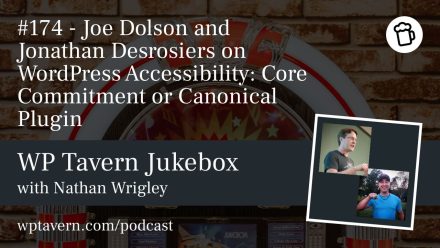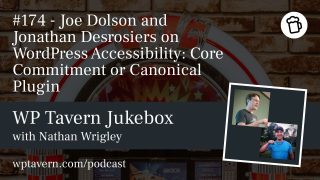Mariya Moeva, product lead for Site Kit — Google’s official WordPress plugin — spoke with WP Tavern’s Jukebox Podcast about the plugin’s purpose, design choices, growth, and roadmap. With a background that began in classical Japanese literature and moved through Google’s webspam team into developer advocacy and product, Mariya described how years of direct feedback from site owners shaped Site Kit’s mission: make Google’s web products simple, actionable, and accessible inside WordPress.
Why Site Kit exists
Site Kit was created to bring key Google tools — Search Console, Analytics, PageSpeed Insights, AdSense, Google Ads and more — into the WordPress admin in a curated, easy-to-understand way. Rather than forcing site owners to juggle multiple complex dashboards, Site Kit surfaces top-level insights where people already work: on their site. Mariya emphasizes the plugin is intentionally beginner friendly, aimed especially at solo site owners and small teams who often handle content, hosting and marketing themselves.
Scale and adoption
Site Kit launched five years ago and has grown rapidly. It recently entered the WordPress top 10 plugins, with about 5 million active installs and roughly 700,000 monthly users. Growth has been organic: many users discover Site Kit via YouTube, blog posts, hosting partners and word of mouth rather than heavy marketing.
What it does differently
Beyond embedding Google product metrics in WordPress, Site Kit combines signals from multiple Google products to create more useful views. Examples include:
– Search Funnel: combines Search Console impressions/clicks with Analytics visitors and conversions to map the full visitor path.
– AdSense + Analytics: shows revenue by page so site owners can see which content earns most and why.
– Site-specific integrations: Site Kit can create analytics events on behalf of the site (with consent), such as tracking signup button clicks or author-related page view events. Because the plugin runs on the site, it can generate data that external dashboards alone cannot.
WordPress-native features
Site Kit integrates with WordPress constructs like authors and categories, enabling reports that aggregate author or category performance. The plugin includes role-based, view-only dashboard sharing: administrators can grant specific WordPress roles access to selected Google data without requiring full product setup. There’s also a Reader Revenue Manager for simple on-site prompts to request donations or subscriptions from readers, aimed at helping smaller publishers become sustainable.
Privacy and architecture
To avoid storing sensitive analytics data in WordPress, Site Kit uses a proxy service to handle credentials and API calls. The plugin does not persist user data in the WordPress database beyond what’s needed for authentication; dashboards are cached for an hour and tokens are refreshed as needed. This design aims to balance convenience with security.
Support and community
Mariya notes Site Kit maintains active, real human support. The team includes full-time support staff who monitor the WordPress.org support forum (and other channels like Reddit) and typically respond within about 24 hours on weekdays. The plugin also adds detailed diagnostics into WordPress Site Health to assist troubleshooting. When issues require specialized help from other Google product teams (for example, AdSense account status), Site Kit support will direct users to the appropriate teams.
Use by agencies and hosts
Agencies can install Site Kit for clients, and many do so because it gives clients a clear, digestible view of performance and reduces the number of support calls. Hosting providers pre-install Site Kit for some customers to add value and improve customer retention; partners include Hostinger, cPanel, and Elementor among others.
Motivation: supporting the open web
Mariya frames Google’s investment in WordPress and Site Kit as driven by a desire to support the open web. If creators and small publishers thrive, search results and the broader web ecosystem benefit. Site Kit’s role is to lower barriers so creators can get found and sustain themselves without needing complex technical skills.
Roadmap and future direction
The team’s longer-term vision moves beyond presenting stats toward delivering prioritized recommendations and actionable to‑do lists. Mariya hears this consistently from users: given limited time, site owners want to be told what to do next and what will have the most impact. Planned directions include:
– Benchmarking: showing how a site performs relative to peers or historical baselines so owners can interpret raw metrics in context.
– Smarter personalization: using aggregated signals and, where appropriate, machine learning to surface more meaningful insights and prioritized tasks.
– Expanded conversion reporting: helping site owners define, track and act on conversions and goals.
– Email reports: providing automated summary reports for users who prefer periodic updates in their inbox rather than checking the WordPress dashboard.
Mariya sees AI and machine learning as logical enablers for benchmarking, categorization and personalized recommendations, though distributed sites present additional technical challenges compared to fully hosted platforms.
How to get it and engage
Site Kit can be installed from WordPress.org and more information is available at sitekit.withgoogle.com. The team welcomes feedback and feature requests via the GitHub repo, the WordPress support forum, and at WordCamp events where Site Kit representatives often attend and demo the product.
Conclusion
Site Kit aims to reduce friction for site owners by curating Google product data inside WordPress, combining signals for clearer insights, and enabling simple on-site actions. With active support, hosting partnerships and ongoing development focused on recommendations and benchmarking, Site Kit’s goal is to help more creators make the open web sustainable and discoverable.






